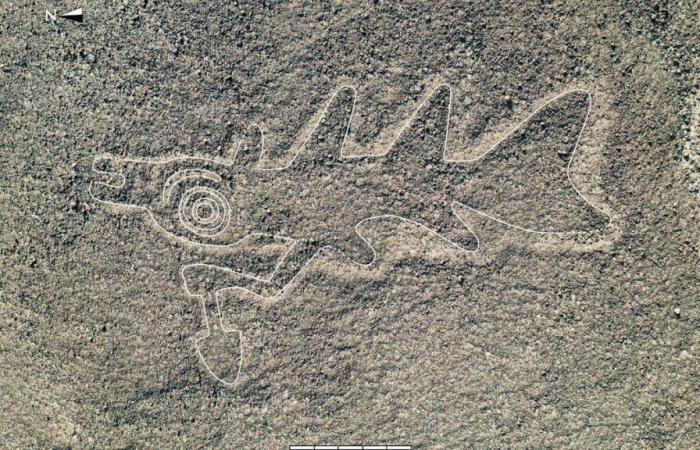A Japanese scientific study using artificial intelligence (AI) has discovered some 303 new geoglyphs in the Nazca Desert in southern Peru. “Using artificial intelligence in the research allowed us to map the distribution of the geoglyphs in a faster and more accurate way,” said archaeologist Masato Sakai of Yamagata University, presenting the results of the study at a press conference at the Japanese Embassy in Lima on Monday. Sakai said the findings were the result of joint work between the university’s Nasca Institute and IBM Research.
The study was endorsed by the scientific community and was published Monday in the “Proceedings of the National Academy of Sciences” (PNAS), the prestigious journal of the National Academy of Sciences of the United States. According to the article, “the AI-accelerated search identified 303 new geoglyphs in six months of field work.”
Among the figures discovered are “giant linear geoglyphs” that “represent mainly wild animals,” but also “small” ones in relief with “patterns related to human activity, including humans and domesticated camelids.” To discover these 303 formations, it was necessary to “analyze a large amount of geospatial imagery produced by aircraft,” the study explains. “This represents a 16-fold increase in the discovery rate thanks to IBM’s AI” and shows how this technology is accelerating discoveries in fields such as archaeology, notes the article in the American scientific journal.
The study recalls that the discovery of the 430 Nazca lines known before this discovery had taken almost a century. Dating back about two millennia, the famous Nazca lines, classified as a UNESCO World Heritage Site, represent geometric figures and silhouettes of animals that can only be seen from the sky. The real meaning of these geoglyphs remains an enigma: some researchers see them as an astronomical observatory, others as a calendar.
The Nazca Lines site is located about 400 kilometers south of Lima, in the desert. The first geoglyphs were discovered in 1927. The inhabitants of the Nazca civilization occupied the area from 200 to 700 AD.






